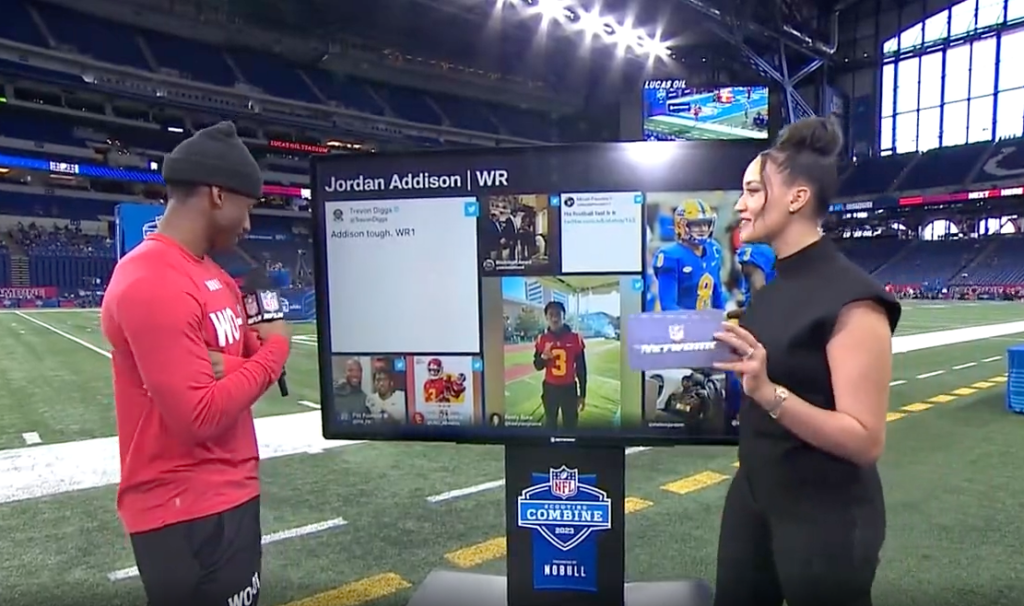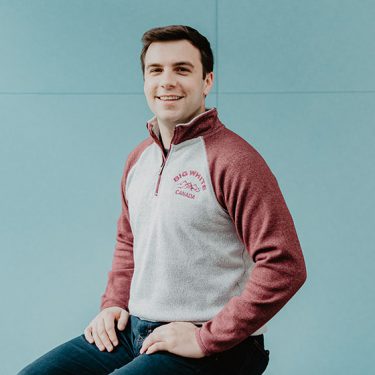
NFL front offices have plenty to digest after a busy weekend in Indianapolis, and we’re not talking about shrimp cocktails from St. Elmo’s. We’re talking about all the notes, interviews, and data they consumed with 300+ players taking part in the 2023 NFL Combine. While they break down the tape on the future rookies of the NFL, we want to take the time to break down the tape on another NFL Media digital masterclass in interactive interviewing.
The NFL Media social channels were filled with videos over the weekend, but the ones that caught our attention were an interview style they’ve been doing for the last few years, and one that others in the industry should study and implement. Oftentimes when athletes, celebrities, or public figures are at these tentpole events they go through several interviews; the repetitive nature of it all often returns repetitive and pre-rehearsed answers, but the interactive interview style we saw from the digital team at NFL Media is a great way to get fun, unique, and raw answers out of your interview subjects, and it makes for some awesome content.
Scan the socials
Taking some time to search through your interview subjects’ social media channels is a great way to find creative questions that can spark a fun story, or give inspiration for a question you know they’ve been thinking about already.
Tap into fun with family
The athletes at the combine are close to achieving a lifelong dream that doesn’t happen without the support of family and friends throughout their life. So one area that made for some fun interviews this year was tapping (it’s a touchscreen, so quite literally) into questions about family and their journey to get to this point. For Mike Morris you can see how he lights up when he gets to talk about his sister and the incredible journey that she is on.
Add visual context to interview
Another area this interactive style adds to the viewing experience, is the visual component. Productions will use B-roll to cover interviews (i.e. showing old highlights from college or high school) but having a screen with an image or video from social media can add great context to a question or a story.
Even if you don’t have access to a touchscreen monitor, you can still create moments like this on any screen and make your interviews more interactive for those taking part in the conversation, and more enjoyable for everyone watching at home.
